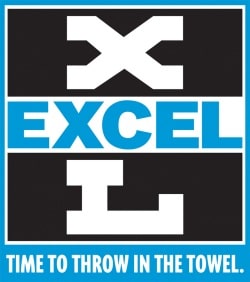Story at a glance:
- Handwashing stops germs from spreading and a third-party analysis suggests heated air drying is equivalent to towel drying in that process.
- Products like Excel Dryer’s XLERATOR help reduce the presence of bathroom pathogens and have a lower carbon footprint vs. paper towels.
- Excel’s ThinAir Hand Dryers reduce the protrusion of wall-hung dryers in public washrooms, meeting ADA requirements.
The pandemic taught us a few important lessons. One of the most enduring is that we need to wash our hands more. Beyond the coronavirus’s most current mutation, failure to properly wash one’s hands can allow a wide variety of bacteria, viruses, parasites, fungi, respiratory pathogens, protozoa, and worms to transmit to the individual.
Yes, each of those germs can be living on someone’s hands if not cleaned properly. Health officials have long described this as a serious issue for good reason.
In bathrooms, and in public restrooms in particular, there are legitimate concerns about the level of germs present that might negate the benefits of handwashing. A spate of news coverage a number of years ago on the aerosolization of germs from toilet flushing was unsettling enough. Plus there is often the need to touch faucets, soap dispensers, and towel dispenser cranks. Fortunately modern bathrooms have eliminated most of those concerns with touchless features like motion activated faucets, soap dispensers, and towels or hand dryers that operate with the simple wave of a hand.
But the last step, how the hands are dried, creates a different set of dilemmas. Paper towels, whether recycled content or not, carry a higher environmental cost than electric hand dryers. This is because the manufacture, transport, and disposal of towels carry a much higher carbon footprint than the small amounts of electricity required to confer an equivalent degree of hand drying. A peer-reviewed life cycle assessment conducted by third party analysts (TrueNorth Collective) on behalf of Excel Dryer found that all Excel hand dryer models have 80 to 87% fewer impacts than the paper towel baseline containing 0% recycled content and 81 to 96% fewer impacts than paper towels containing 100% recycled content.
From a pathogen standpoint the presence of moist paper towels—which often overflow a receptacle—provide an excellent breeding ground for bacteria, viruses, and fungi. Do air dryers improve on that situation? And if so, how?
Circulating Air and Pathogens in Bathrooms
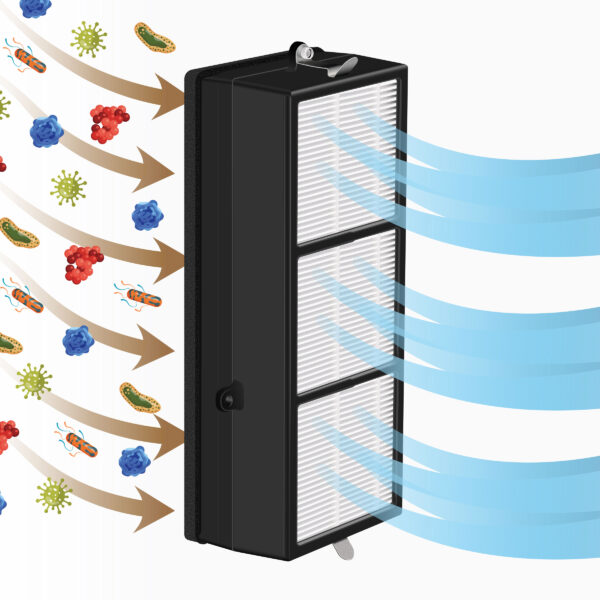
Image courtesy of Excel Dryer
If electric hand dryers are greener, should there be a concern about airborne pathogens possibly blowing onto moist hands?
The science suggests two things: Air movement caused by hand dryers might or might not consequentially disperse small particles, including microorganisms, into the surrounding area. But no study has tied that air movement to human illness. Far and above this concern, as identified in multiple studies, is that poor hygiene practices by individuals can and do lead to illness. How people wash their hands, if at all, is far more impactful.
Still, the design of the hand dryer, and the maintenance schedule applied to installed dryers, can be considered important. This is what drove research and development by Excel Dryers to develop a two-filter feature into the company’s signature XLERATOR and ThinAir® hand dryers.
The filters include two components, explains Mark Wysk, senior director of engineering/research and development at Excel. One functions as a pre-filter—removing larger dust, hair, and pollen particles. The second is the HEPA (high efficiency particulate air) filter, which is made of electrostatically charged polypropylene fibers. It captures 99.95% of particles equal to or larger than 0.3 micrometers (a human hair is about 50 micrometers).
To identify efficacy the company subjected the product to third-party study and analysis. “We tested the Excel HEPA filters against bacteriophages,” Wysk says, referring to the abundantly common and tiny virus that replicate in bacterial cells, found wherever bacteria exist. The test was conducted by Microchem Laboratory (an independent testing lab) and found there were no discernable differences in bacteria on hands dried by paper towels and the XLERATOR hand dryer—negating the sense that blown air leads to greater pathogen risk.
Existing XLERATORs can be retrofitted with the 2-part filtration system.
Restroom Requirements, Maintenance, and Time to Dry
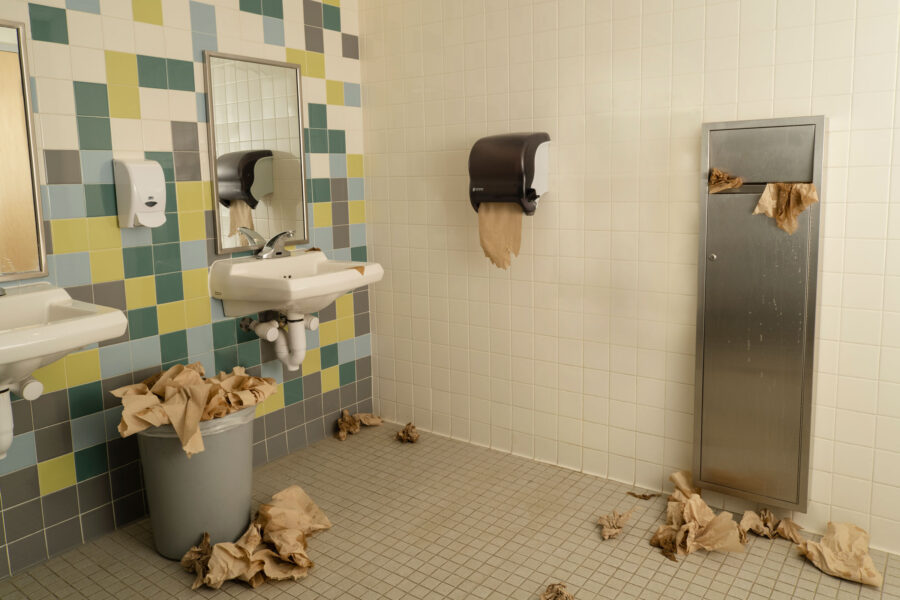
The average bathroom may end up looking this without the XLERATOR dryer. Photo courtesy of Excel Dryer
ADA requirements for bathrooms states that objects projecting from walls, which would include hand dryers, protrude no more than four inches into walkways, halls, corridors, passageways, or aisles. To accommodate this, Excel Dryer developed the ThinAir Hand Dryer—a surface-mounted, fast-drying hand dryer that meets the mandated four-inch limit.
A recessed housing set can also be purchased with the XLERATOR dryer to meet the ADA requirement. This enables the dryer to meet the four-inch mandate by setting it back into the wall.
The ThinAir model offers all the enhanced features that are available with the XLERATOR, including adjustable sound, speed, heat controls, multi-voltage options, and an externally visible service LED.
The HEPA filters in both types of Excel brand hand dryers require periodic cleaning. How often depends on use frequency—think sports stadiums and urban transportation hubs versus offices—and ambient air quality. “Some locations have more particulates present than others,” Wysk says. He suggests the filters be cleaned at least once a year.
How long should a person use a hand dryer? A variable includes the size of human hands, with larger hands taking a bit longer. Wysk says on average it is about 14 seconds. This compares to the 20 seconds for the handwashing, as recommended by the CDC.
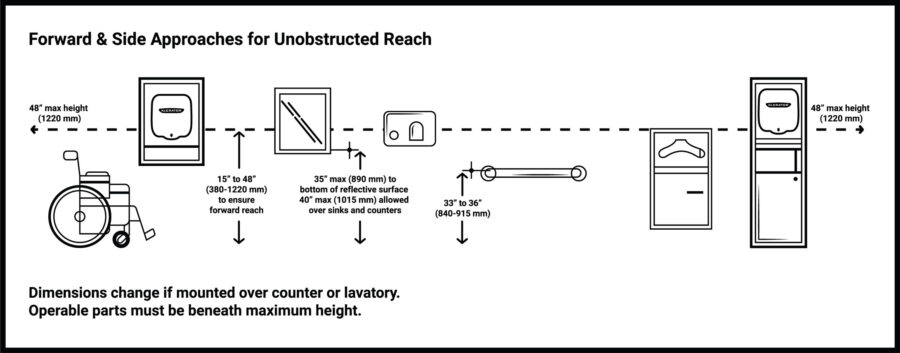
Image courtesy of Excel Dryer
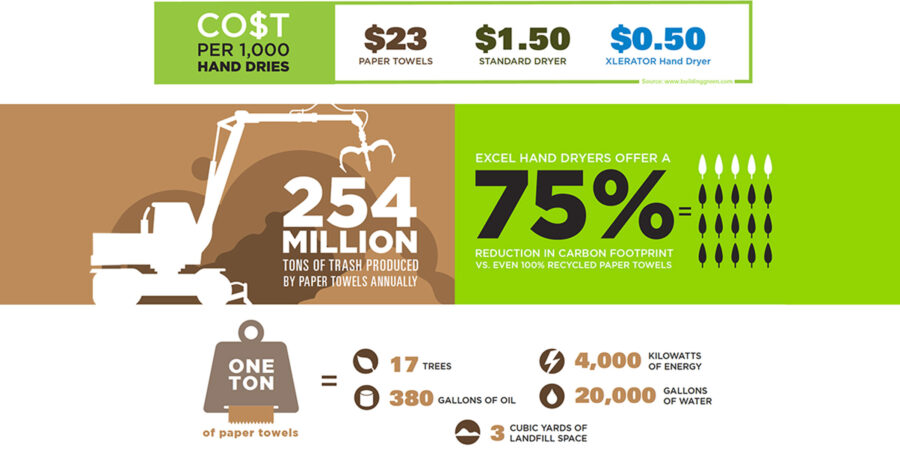
Image courtesy of Excel Dryer


